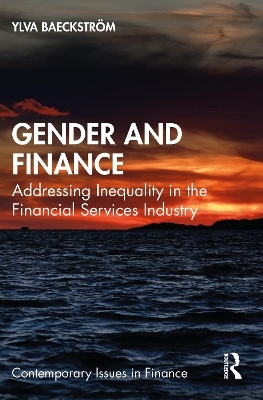
Gender and Finance
Addressing Inequality in the Financial Services Industry
Seiten
2022
Routledge (Verlag)
978-1-032-05557-2 (ISBN)
Routledge (Verlag)
978-1-032-05557-2 (ISBN)
This book examines the world of finance and the role of gender within it. It looks at the financial services industry, arguably the most powerful and remunerative sector that exists, and shows how it was created by men for men.
The author explains how historically women were excluded, how minimal progress has been made, and outlines how the sector still needs to change to function effectively in a modern, equal opportunities world. Addressing gender inequality in financial services is of utmost urgency and importance because of the extent to which it affects women in all stages of life. Women’s exclusion in financial services is also mirrored by how men have been excluded from parenting through a similar set of societal expectations, government legislation and corporate policies. The author maintains that to succeed, we need to address both financial services and parenting. To do so we need regulatory support. Because of its power and dominance, the financial services industry has the opportunity to lead this change and to champion gender equal practices. These practices are economically beneficial to all participants, not only female employees and consumers. We all need these benefits as we rebuild our economies following the COVID-19 pandemic. The book makes an important contribution to the critical and increasing awareness of gender concerns. It presents insights drawn from original research and data about gender biases.
The book is an essential secondary text for a range of university courses, including economics, finance and accounting, business studies and gender related courses, as well as MBAs and Executive Education programmes that focus on gender in business. It is also a must read for policy makers, managers in financial services institutions and any other businesses that seek to attract the growing market of female consumers, employees and business leaders.
The author explains how historically women were excluded, how minimal progress has been made, and outlines how the sector still needs to change to function effectively in a modern, equal opportunities world. Addressing gender inequality in financial services is of utmost urgency and importance because of the extent to which it affects women in all stages of life. Women’s exclusion in financial services is also mirrored by how men have been excluded from parenting through a similar set of societal expectations, government legislation and corporate policies. The author maintains that to succeed, we need to address both financial services and parenting. To do so we need regulatory support. Because of its power and dominance, the financial services industry has the opportunity to lead this change and to champion gender equal practices. These practices are economically beneficial to all participants, not only female employees and consumers. We all need these benefits as we rebuild our economies following the COVID-19 pandemic. The book makes an important contribution to the critical and increasing awareness of gender concerns. It presents insights drawn from original research and data about gender biases.
The book is an essential secondary text for a range of university courses, including economics, finance and accounting, business studies and gender related courses, as well as MBAs and Executive Education programmes that focus on gender in business. It is also a must read for policy makers, managers in financial services institutions and any other businesses that seek to attract the growing market of female consumers, employees and business leaders.
Dr Ylva Baeckström is a researcher in finance at King’s College London and an experienced banker, entrepreneur and psychotherapist.
1. Gender inequality is in everything. 2. The prominence and dominance of financial services. 3. Women as consumers of fnancial services. 4. Women as employees in financial services. 5. Women do finance at least as well as men (despite the odds against them). 6. A gendered professional and family life balance. 7. Actions to reduce gender bias and increase gender equality. 8. Conclusion: The win-win of taking the gender out of financial services
| Erscheinungsdatum | 08.03.2022 |
|---|---|
| Reihe/Serie | Contemporary Issues in Finance |
| Zusatzinfo | 2 Tables, black and white; 2 Line drawings, black and white; 5 Halftones, black and white; 7 Illustrations, black and white |
| Verlagsort | London |
| Sprache | englisch |
| Maße | 156 x 234 mm |
| Gewicht | 453 g |
| Themenwelt | Sozialwissenschaften ► Soziologie ► Gender Studies |
| Wirtschaft ► Betriebswirtschaft / Management ► Finanzierung | |
| Wirtschaft ► Volkswirtschaftslehre ► Finanzwissenschaft | |
| ISBN-10 | 1-032-05557-X / 103205557X |
| ISBN-13 | 978-1-032-05557-2 / 9781032055572 |
| Zustand | Neuware |
| Haben Sie eine Frage zum Produkt? |
Mehr entdecken
aus dem Bereich
aus dem Bereich
wie sich das weibliche Gehirn jetzt verändert und Sie diese neue …
Buch | Hardcover (2023)
Mosaik (Verlag)
24,00 €


